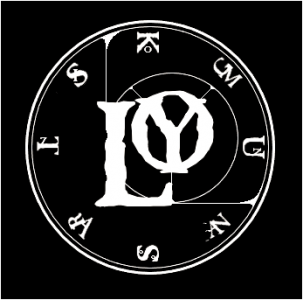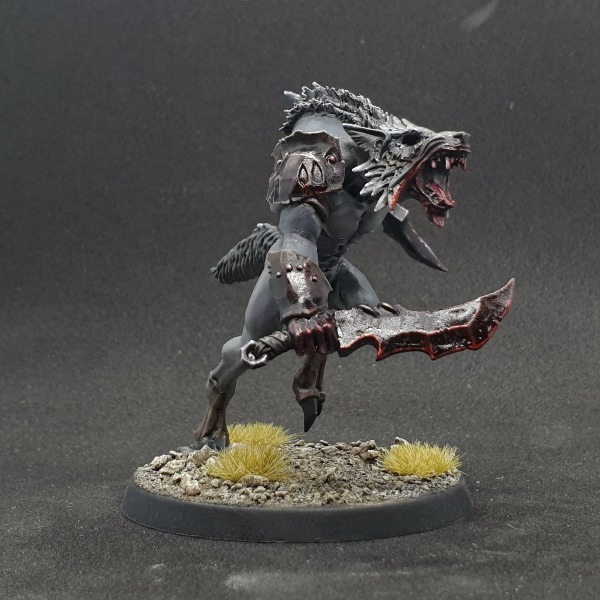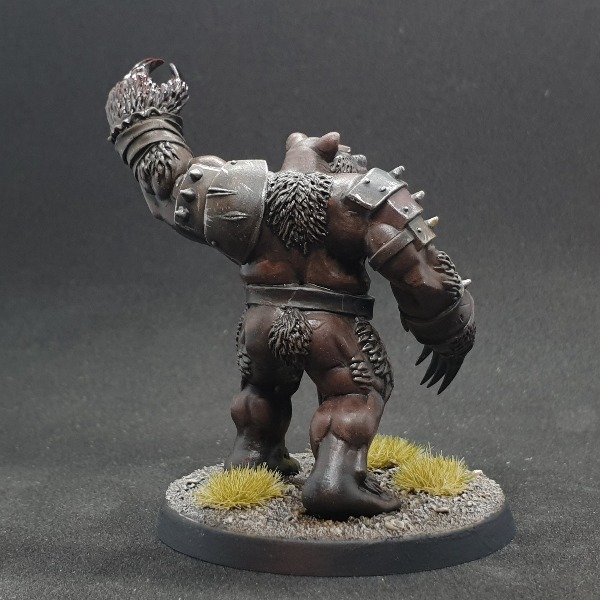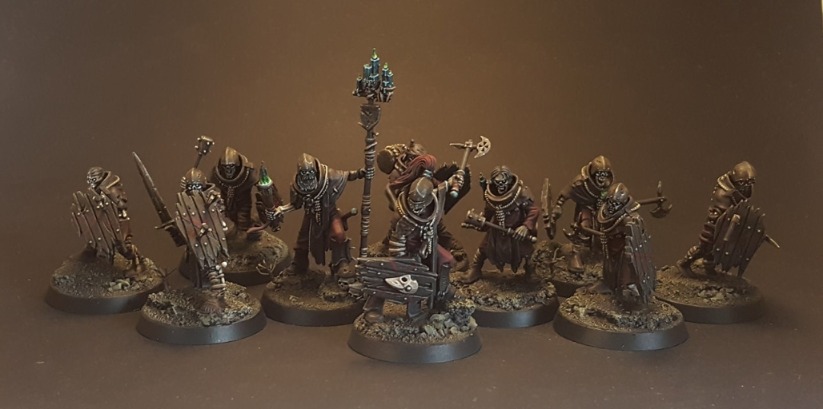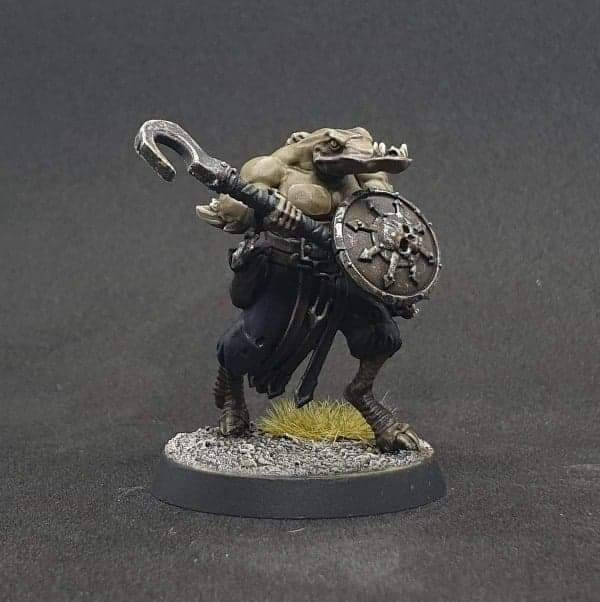Raum stumbled from the portal in a daze, a brilliant light blinding him and a bitter chill wind biting at his flesh. From behind him his remaining followers staggered out to join him. Shielding his eyes Raum adjusted to the light and took in his surroundings. A snow strewn mountain peak, a rapidly fading portal, unstable energies lashing from its collapsing form into the cracks that spiderwebbed across the gateways obsidian surface. His followers milled around, confused, cursing, drawing weapons on each other as they stumbled into each other. He stared at them, their forms familiar yet diminished, a far off memory of those he had been fighting alongside only moments before. He stared at his own hands, slick with blood, his twin sickle blades glistening in the light. They felt heavier than he remembered. The cracking of crisp virgin snow drew his gaze…
Trudging towards them a group of hulking fur clad warriors, each bearing heavy blades and bolt throwers, their dull armour contrasting against the brilliant snow. Their leader began barking orders in the Azyrite tongue, and a volley of bolts hurled at Raum and the others, followed by a bellowing charge. Nur and three of Quatis’ attendants were struck down, the bolts throwing the lesser mortals back like rag dolls, while Nur took two in the heart and one in the head, dropping to her knees before collapsing into the snow. Raum himself barely managed to side step a bolt aimed at his head, and then an axe thrown by one of the dull brutes, which ended up lodged in Brosts neck and collar with fatal force.
The warrior that threw the axe barreled into Raum, lifting and carrying him till he smashed against the gate, leaving Raum winded and dazed. The warrior went to pummel Raum, but his fist met stone instead, Raum shifting aside and out of the warriors grasp. The warrior spun and wrenched his axe from Brosts remains. Raum twirled his blades in anticipation, eying up the brute as anarchy broke out around them. He was a sight to behold. This was no mortal, his size, his strength, far beyond even the strongest of Raums mortal opponents. A vast bear skin cloak framed his form as he stood in a wide combat stance. On his head he wore a helm fashioned in the form of a mortal’s face with a bear head atop it, a harsh and inelegant attempt, but solid looking. And all about his garb and armour he bore the marks and sigils of the mortals God King, of the wretched Sigmar. Raum wondered to himself how Sigmar had wrought such warriors, and where had they been when he was carving his way through the Ghurish kingdoms loyal to the God King? They would have been such a lovely distraction from the pitiful offerings that threw themselves in his path. The warrior roared and swung his axe at Raum, cleaving the air in a wide arc as Raum stepped back. Raum countered by pirouetting around him and sweeping his own blade out and through the back of the brutes neck, taking his head off.
Before it could even hit the ground a thunderous crack of lightning arced from the warriors form and into the sky in a blinding flash, leaving Raum stunned and somewhat intrigued. He strode between two more that had laid low Mae’is, Ji and a handful of his mortals. As they turned to meet him, Raum buried his blade deep in the gut of one, and brought down the other with a high blow that sheared her in two. Two more flashes of lightning speared up around Raum, with more being added to the display as his remaining followers dispatched the others. The attack had been short but brutal. Fully a third of his remaining followers lay dead in the snow, their blood running and swirling through it, turning it shades of crimson and cherry pink, while the hollow remains of their opponents left no such visceral treats for the eye.
A few meters from the gate the charred corpses of a group of mortals ringed one of the warriors remains, they had clearly been crawling all over him when one of them stuck the fatal blow. Quatis was leant over a dead gryph hound, one hand deep in its chest and bloody knife in the other. Raum knew these beasts, native to Azyr, and often seen where Azyrites ventured and settled. But this was not Azyr. He was certain, he felt it in his bones. Wherever this place was it did not look or feel like the domain of the God King, though there was an oppressive force that bore down on him and his followers, draining them of their strength. Raum had slain countless champions of the other gods and often by the score, and all as vital and strong as these lightning born. Yet he and his followers struggled with a handful, Raum himself being taken aback by the attack of the first brute. What was this place, and why was it having such a deleterious effect on them all? The only certainty they had was that they would not be returning through the gate. The force of Raums impact having cracked it enough to cause one side to collapse as the fighting ceased. They could only go forward, down the mountain and into this new land. The thought of the challenges ahead managed to elicit a blood stained smile from Raum. He dearly hoped that these lightning born were only a taster of this new realms offerings. His quest to find the Dark Prince may have been marred by the efforts of others, but he felt that this was still the right path. Such a task should challenge those who seek their god, to show their dedication and in the effort gain his blessings and boons. Yes, this is where he needed to be…
